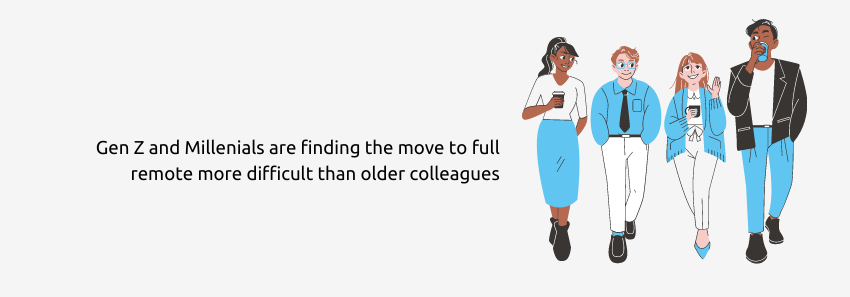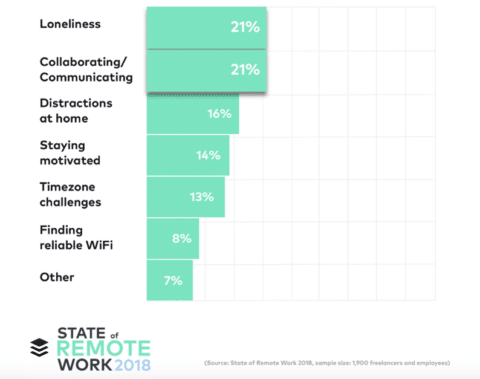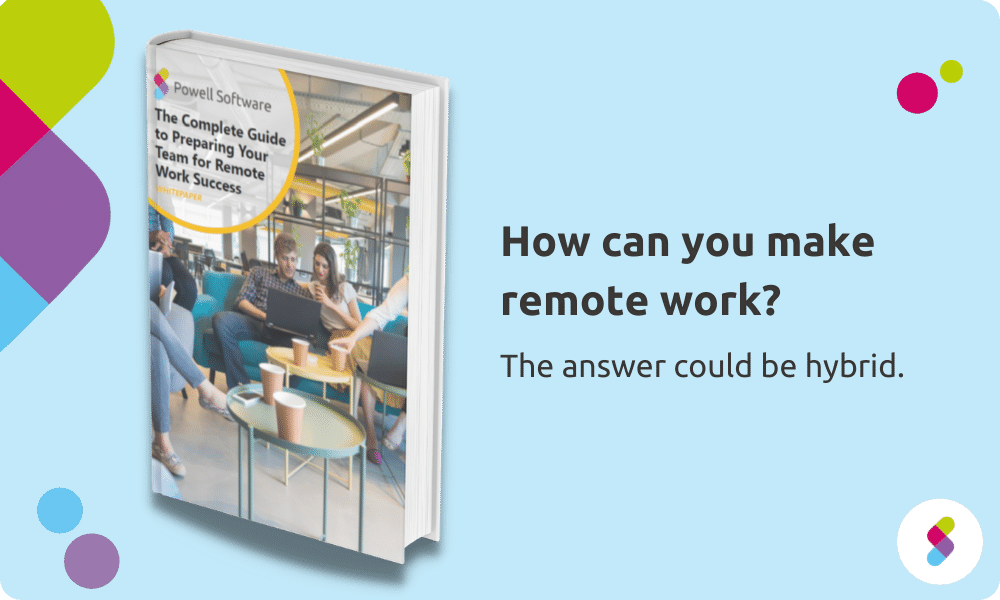Are offices a thing of the past?
Covid-19 lockdowns and a mass move to remote work provided the largest work-from-home experiment imaginable. 42% of workers in the US worked from home full time during the first Covid-19 lockdown.
Many months on and studies are supporting the long-term move to a remote workplace. 99% of respondents to one study report wanting to work from home at least partially going forward. While 75% of employees report that they are as productive at home as in the office. This is important as employee productivity has been a sticking point in the remote work debate.

Why are employers downsizing?
With employees successfully working from home, the need for physical office space is in doubt. Some organizations are seeing the benefits of giving up their lease and allowing remote work indefinitely.
-
Cutting costs
Running an office is expensive, and a move to remote is attractive to cut overheads. The pandemic has caused a strain in many sectors and cutting costs while retaining talent, could help. It’s estimated that employers can save $11,000 per part-time remote worker a year. Savings which organizations can invest in the digital workplace, keeping employees connected remotely.
-
Unlimited growth potential
The hiring of new talent in a company on an upward growth trajectory can be limited by office space. In a virtual team, organizations can expand and grow without having to invest in new premises.
-
Expanding the talent pool
Without a physical office, businesses have access to a larger talent pool. Unrestricted by location, new hires can come from across the globe. Hiring becomes more diverse and inclusive of different groups of people. It also offers some less thought-about benefits, like keeping women in the workforce. One study found that nearly a third of mothers took a career break because they weren’t given flexible options to stay on. Today’s technologies facilitate the interviewing, hiring, and onboarding of remote employees.
Will every company go full-remote?
Full closure of physical offices won’t happen for all organizations. Some will be relieved at this news, as the move to remote work hasn’t been easy for everyone.
Making the move to full remote? Here are some remote working tips to get you started!
Work from home during the pandemic wasn’t equal. Some remote employees had dedicated office space, fast internet, and proper equipment. Others shared small spaces, working at their kitchen table in busy households. Organizations and HR can certainly help in the transition to remote work. But at the end of the day, it won’t suit everyone.
How has remote working impacted younger generations?
It may come as a surprise, but younger workers are struggling more with the transition out of the office. Although Gen Z and Millennials were expected to embrace remote work, 45% find communicating and getting information from colleagues difficult.
One explanation is that they have less experience, need more information, and expect it quickly. Another is that they haven’t been provided with the right technology. Employees need to be equipped with communication and collaboration tools to effectively work from home.

Younger workers are also more likely to live in shared or smaller spaces. Whereas older colleagues may have larger houses and dedicated offices. The disparity goes beyond space. Younger employees also miss out on the socialization and mentoring that happens in a physical office. The end of the office could be disruptive for those in the early stage of their career.
The commute to work is something employees seemed unlikely to miss. In fact, remote workers can save 11 days a year by moving to partial remote work. For some, the commute from home to the office has mental health benefits. The physical journey allows employees to mentally transition from work to home, improving employee wellbeing. Remote work and closing office space can make it difficult for employees to switch off, leading to stress and burnout.
It’s time to redesign the office as we know it
But, it’s the end of the office is quite a drastic statement. Many roles require a physical presence, like in manufacturing, retail, and healthcare. While knowledge-intensive jobs done from a computer are naturally suited to remote work.
So it’s time to focus on the future of work and reimagine the office. Organizations need to find a balance between presence and flexibility. In a hybrid workplace, some employees split their time between the office and remote. Others stay full-time in the office. But all employees are rarely in one space simultaneously.

With fewer people in the building, businesses can redesign spaces to suit employee needs. Perhaps employees only come to the office to meet with colleagues for brainstorming, social events, or teaching days. In this case, desks could be removed and replaced with creative rooms or café style areas. Offices will have to ensure social distancing and better health and safety measures.
Hot desking
37% of employees will work continue to from home regularly, a jump from 18% pre-pandemic, and businesses are unlikely to need as much space as they did before. This could spur a move to shared offices with two or more businesses co-renting. Employees might not have a designated workspace but flex-desk and book in advance.
Organizations could also decide to decentralize and have regional hubs, in coworking spaces. This allows people to move to less expensive areas, and come into the office when they wish.
Flexible working
While it may not be the end of the office, it is the end of 9-5 in-office Monday to Friday. The workplace of the future is hybrid. More than a quarter of employees planned to adopt hybrid work by the end of 2021.

This flexible working style balances the benefits of remote work, saving employees and organizations time and money as well as offering a better work-life balance.
If it’s not the end of the office it’s the beginning of a hybrid workplace and businesses now need to ensure employees are kept productive, motivated, and connected.
The role of technology in the future of work
In a survey by McKinsey, 85% of respondents were found to have accelerated digital transformation to facilitate employee collaboration since Covid-19 lockdowns began. Virtual meetings, brainstorming sessions, calls, and daily interactions between colleagues require the right remote working solutions.
Employees need to be able to collaborate in real-time, working together on documents, sending files, having video calls, and more. They need to be able to create spaces dedicated to projects and ensure that whether they’re in the office or at home everyone can be at their best. Collaboration platforms like Microsoft Teams are facilitating this teamwork. While at the beginning Teams was seen as a tool to chat it’s becoming central to the digital workplace. To ensure it’s kept in order organizations need to take control, add ons and integrations can help make the most of Teams.

Collaboration and communication are some of the biggest struggles for remote workers. The challenge has long been that leadership invested heavily in the physical workspace and forgot about the digital workplace. Remote and hybrid workers rely on the digital workplace to receive information. For example, an intranet keeps them updated on top-down communications.
As organizations continue to move to hybrid work, the digital workplace becomes the key tool that allows organizations to harmonize in-office and remote employees.
Planning to make the move to remote or hybrid working? We’ve put together this comprehensive guide to help you make the move. Understand the different structures from full remote to hybrid.
Learn how to foster company culture and explore the digital tools you’ll need in this transition.





